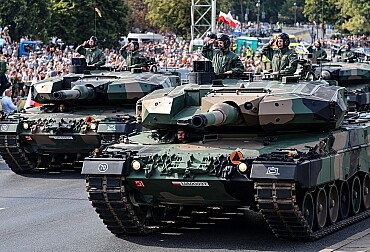Pentagon Replicator Initiative in context
The Pentagon Replicator Initiative could be one of the most important recently published initiatives that could greatly improve US and allied defenses, mainly in the western Pacific region.
The Pentagon Replicator Initiative is one of the latest defense innovations initiative that responds to and learns from the ongoing war in Ukraine. It is an all-domain initiative to field thousands of unmanned vehicles by August 2025 in the first phase. The Pentagon’s intent is to disperse US combat power across regions and avoid the concentration of expensive, mainly manned platforms in areas that can be easily hit by enemy fire (air and naval bases). Another intent is to create a cost-exchange dilemma for the potential enemy to use scarce and expensive resources to counter relatively cheap unmanned vehicles across all domains. One of the main advantages that, according to the Pentagon, the Replicator Initiative will have is the pace of the development and deployment of these unmanned vehicles. Although the Pentagon has not released much information about the Replicator Initiative, it is publicly known that Switchblade 600 loitering munition is a part of the Replicator Initiative. The overall cost is currently unknown, but the Pentagon asked for 300 million dollars in Fiscal Year 2023, 200 million dollars in 2024 and 500 million dollars in Fiscal Year 2025.

Replicator Initiative is especially important in the Indo-Pacific, or Western Pacific region. Overall, the main idea behind the replicating initiative is to learn lessons from Ukraine that could be used throughout the western Pacific region before and during potential armed conflict with China, particularly over Taiwan.
During this particular conflict, according to the U.S. Indo-Pacific Command commander, Admiral Papparo, the U.S. plans to send swarms of drones to the Taiwan Strait to halt Chinese invasion of Taiwan and to buy time for the U.S. and allies to gather enough forces in the region. Large swarms of drones could serve not only as strike platforms but also as a Intelligence, Surveillance, and Reconosiance (ISR) platforms. For instance, swarms of drones could guide long-range anti-ship missile against Chinese naval invasion fleet.
However, China currently dominates the Taiwan Strait with hundreds of drones of all classes that could be launched from the mainland. According to the latest report by the Center for New American Security, the U.S. and Taiwanese armed forces should deploy mix of advanced and cheap drones across all domains. The U.S. military already is buying these drones. Apart from the aforementioned 1 000 Switchblade 600 loitering munitions, there is an initiative called Prime efforts, which aims to produce unmanned vessel capable of traveling hunderds of kilometers and monitoring enemy surface vessels. The U.S. Army is also investing in Low Altitude Stalking and Strike Ordnance (Lasso) project which aims to produce semiautonomous loitering munition for infantry brigade combat teams. The U.S. Marine Corps selected potential defense contractors for their Organic Precision Fires – Light kamikadze drones and is also experimenting with Israeli loitering munition Hero-120. The U.S. Navy is also experimenting with uncrewed vessels equipped with unspecified missiles to escort transport ship across the Pacific Ocean. However, although all these projects could be very well part of the Replicator Initiative, it is currently unknown where they are an official part because, for example, the U.S. Navy has been experimenting with uncrewed vessels long before the Replicator Initiative started. The U.S. is also working on boosting Taiwanese offensive drone capabilities with Altius kamikadze drones and Switchblade-300 loitering munitions. Taiwanese armed forces are also experimenting with indigenous drone capabilities to erase dependence on the U.S. or on commercial solutions from China.
The Replicator Initiative could be a great example for Europe on how to enter the era of the drone warfare. As this initiative shows, it is still more important to rely on technological advantage paired with large manufacturing capacities to deliver advanced drones to counter our competitors and enemies.







